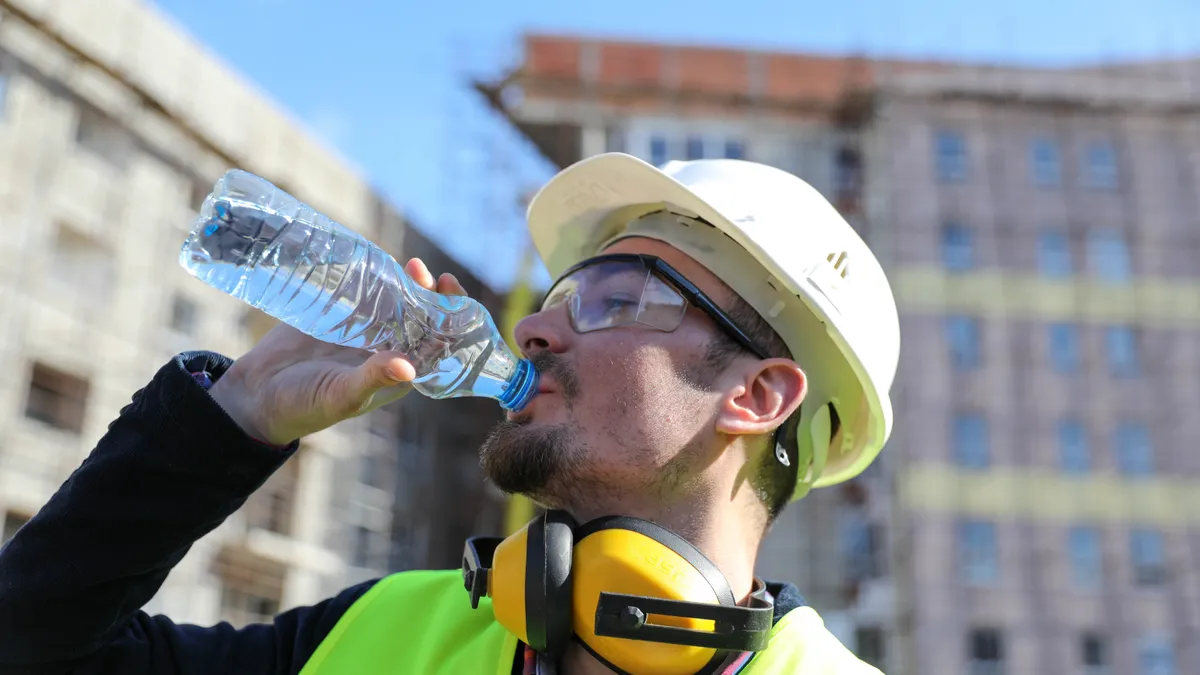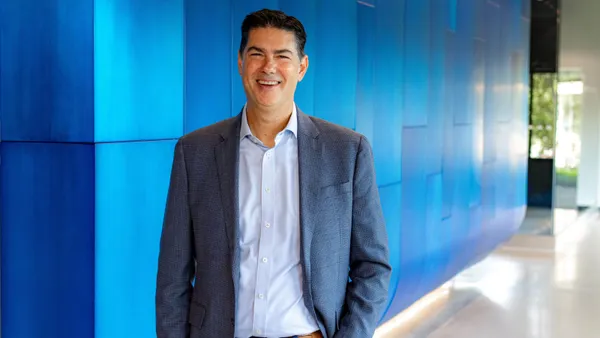Dive Brief:
- Texas Gov. Greg Abbott approved a wide-ranging law last week that will eliminate mandated water breaks for some state construction workers, beginning Sept. 1. There is not yet a federal standard to protect workers from dangerous heat conditions, and those in construction are especially vulnerable to heat-related risk.
- The Texas Regulatory Consistency Act rolls back locally enacted protections that go further than state law, including ordinances in Austin, Texas, and Dallas which require 10-minute breaks every four hours for construction workers to hydrate and get a break from the sun, the Texas Tribune reported. Supporters of the law claim it will eliminate cumbersome, varied ordinances across the state.
- The law would also block local laws mandating paid sick leave, and a $15 minimum wage for workers on county construction projects and safety training in Harris County.
Dive Insight:
Texas had its second-hottest summer on record in 2022, though forecasts indicate this summer won’t be as scorching. Nonetheless, climate change will likely lead to hotter heat waves that last longer.
Forty-two workers died in Texas from heat exposure between 2011 and 2021, the highest amount in the U.S., Texas Tribune reported. Even then, safety experts indicate the number of heat-related fatalities is likely larger than records show, as these deaths can be attributed to other illnesses or stresses.
OSHA is developing a heat standard for workplaces, though the process of doing so takes years of input and fine tuning. In the meantime, the advice from OSHA and the National Institute for Occupational Safety is more rigorous than the local Texas laws: one cup of water every 15 to 20 minutes.
Until it creates the formal standard, the agency has a national emphasis program calling attention to its mantra for beating the heat: “Water, rest, shade.”
Response to repeal
Geoffrey Tahuahua, president of Associated Builders and Contractors of Texas, told the Texas Tribune rigid rules can encourage contractors to do the minimum to protect workers, rather than empowering them to evaluate each jobsite individually.
On the other hand, David Michaels, head of OSHA from 2009 to 2017 and current professor at George Washington University School for Public Health, told the Tribune that the ultimate responsibility does lie with employers to keep workers safe, yet “they are doing a very poor job.”
Jose Garza, environmental health and safety leader in Austin for Redwood City, California-based DPR Construction, said whenever a safety rule is revoked, contractors still have the responsibility to focus on the safety of workers on the job. Nonetheless, he said DPR found Austin and Dallas’ mandates didn’t do enough.
“The recently passed local ordinance to require rest breaks was absolutely well-intentioned,” Garza said. “In practice, however, we found even those ordinances to not go far enough to keep people safe.”
During last summer’s intense heat, Garza said DPR did intense research and managed to keep workers safe, and in the process, the Austin team discovered prolonged time in the shade was instrumental in lowering workers’ body temperatures.
Using OSHA and NIOSH guidance as a baseline to decide break frequency helps, but DPR makes intentional decisions as the day wears on, the heat rises and the sun beats down harsher.
With the law removed by Abbott, Texas contractors must do more to be proactive for worker safety, Garza said.
“We believe we cannot properly do business and keep workers safe without a strategy to ensure workers are protected from heat-related illness,” he said. “We do think, unfortunately, this new law underestimates this need, and we hope people procuring construction services ask how their vendors will account for heat and safety.”















